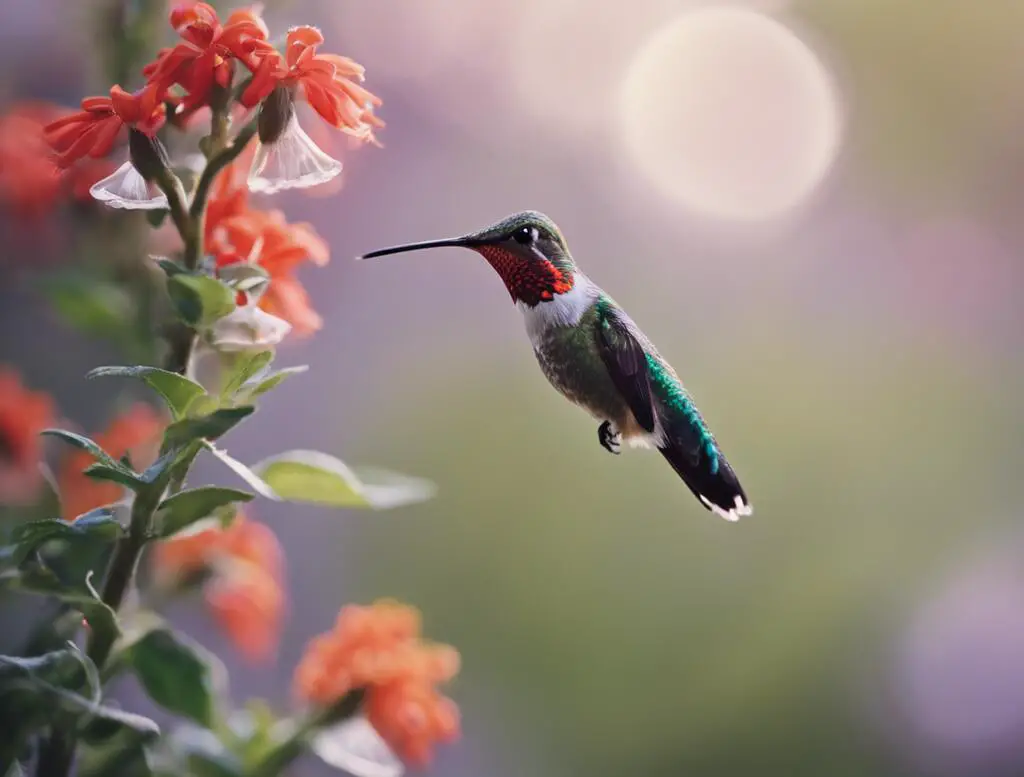Hummingbirds have mesmerized and captivated nature enthusiasts with their vibrant colors, aerial acrobatics, and unique characteristics. Fun facts about hummingbirds reveal that these fascinating creatures have evolved over millions of years, adapting to various environments and developing remarkable traits that set them apart from other bird species. Let’s explore the evolutionary journey of hummingbirds and explore the remarkable aspects that make them truly exceptional.
Table of Contents
The Evolution of Hummingbirds
The Origin of Hummingbirds
Hummingbirds belong to the family Trochilidae, which is native to the Americas. These delicate birds have a long evolutionary history that dates back approximately 22 million years. They are believed to have originated in South America and gradually spread to North America. To date, over 360 species have been identified.
Evolutionary Adaptations
Hummingbirds have undergone remarkable evolutionary adaptations to suit their nectar-based diet and unique flying abilities. Their long, slender bills and specialized tongues are perfectly designed for feeding on the nectar of flowers. Over time, they have developed a symbiotic relationship with flowering plants, playing a crucial role in pollination.
Flight Capabilities
One of the most distinctive features of hummingbirds is their extraordinary flying skills. These agile birds can hover in mid-air, fly backward, and even upside down with incredible precision. Their wings beat at an astonishing rate of up to 80 times per second, enabling them to perform intricate aerial maneuvers.
Size and Variety
Hummingbirds exhibit a wide range of sizes, with the smallest species, the Bee Hummingbird, measuring a mere 2.25 inches in length. In contrast, the largest species, the Giant Hummingbird, can grow up to 8.5 inches long. These diverse sizes reflect the adaptability and evolution of hummingbirds to various habitats and ecological niches.
Feeding Behaviors
Hummingbirds are known for their voracious appetites and high metabolism. To sustain their energy levels, they must feed frequently throughout the day. Their primary source of nutrition is flower nectar, which provides the essential sugars they need for energy. Additionally, hummingbirds consume small insects and spiders to supplement their diet with protein.
Migration Patterns
Many hummingbird species are migratory, traveling great distances between their breeding and wintering grounds. Some species undertake epic journeys, crossing hundreds or even thousands of miles to reach their destination. These migratory patterns showcase the remarkable endurance and navigation skills of hummingbirds.
Courtship Displays
During the breeding season, male hummingbirds perform elaborate courtship displays to attract females. These displays often involve aerial dances, flashy plumage displays, and chirping vocalizations. The male strives to impress the female with his agility and prowess, demonstrating his fitness as a potential mate.
Coloration and Plumage
Hummingbirds are renowned for their iridescent plumage, which can display a dazzling array of colors depending on the angle of light. These vibrant hues serve multiple purposes, including camouflage, species recognition, and mate attraction. The metallic sheen of their feathers is a visual delight for birdwatchers and photographers alike.
Conservation Challenges
Despite their remarkable evolutionary adaptations, hummingbirds face numerous threats in the modern world. Habitat loss, climate change, pesticide use, and predation are among the challenges that these delicate birds confront. Conservation efforts are crucial to protecting hummingbird populations and ensuring their survival for future generations.
Awe-Inspiring Creatures
Hummingbirds are truly awe-inspiring creatures that have evolved unique traits and behaviors over millions of years. From their specialized feeding adaptations to their incredible flight capabilities, these birds continue to fascinate and enchant bird enthusiasts worldwide. By understanding and appreciating the evolutionary journey of hummingbirds, we can better conserve and protect these remarkable avian treasures.
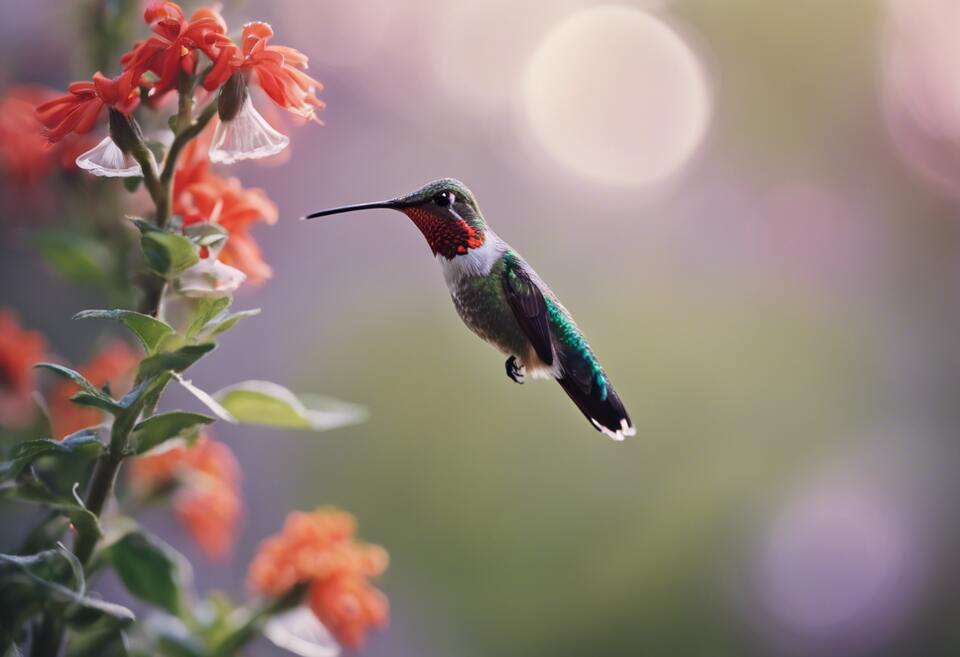
Unique Physical Characteristics That Make Hummingbirds Extraordinary
Hummingbirds are fascinating creatures that possess unique physical characteristics setting them apart from all other bird species. Let’s delve into what makes these tiny birds so extraordinary.
Exceptional Flight Abilities
Hummingbirds are the only birds capable of sustained hover flight. They can move not only forward and backward but also sideways and even upside down with incredible precision. This is due to their remarkable wing structure, which allows them to beat their wings in a figure-eight pattern, generating lift on both the upstroke and the downstroke.
Unmatched Speed
Despite their small size, hummingbirds are incredibly fast. They can reach speeds of up to 30 miles per hour when flying horizontally and exceed 60 miles per hour when diving. This agility helps them escape predators and defend their territory effectively.
Vibrant Plumage
Hummingbirds are known for their dazzling iridescent plumage, which seems to change color when viewed from different angles. This visual phenomenon is caused by the refraction and reflection of light on the microscopic platelets in their feathers, creating a spectacular display of colors that make them truly unique in the avian world.
High Metabolic Rate
To sustain their rapid wing movement and high energy levels, hummingbirds have an exceptionally high metabolic rate. They have to consume around half of their body weight in sugar each day to fuel their intense activity levels. This explains why they have such a voracious appetite for nectar.
Specialized Tongue Structure
Hummingbirds have long, tubular tongues that allow them to reach deep into flowers to extract nectar. What makes their tongue even more remarkable is that it can split at the tip, enabling them to lap up nectar at a rate of up to 13 times per second.
Minuscule Size
Hummingbirds are among the smallest birds in the world, with the bee hummingbird measuring a mere 2.25 inches in length and weighing less than a dime. Despite their tiny stature, these birds exhibit extraordinary strength and agility.
Acrobatic Displays
During courtship rituals, male hummingbirds perform elaborate aerial displays to attract females. These displays can involve rapid ascent and descent, intricate loops, and sharp turns, showcasing not only their agility but also their creativity in wooing potential mates.
Environmental Adaptability
Hummingbirds are resilient creatures that have adapted to diverse habitats ranging from tropical rainforests to high-altitude mountain ranges. Their ability to thrive in varied environments is a testament to their remarkable adaptability and survival skills.
Long-Distance Migration
Despite their small size, some hummingbird species undertake impressive migration journeys. The Rufous Hummingbird, for example, travels up to 4,000 miles from its breeding grounds in North America to its wintering grounds in Mexico. This annual migration showcases their endurance and navigational abilities.
Keen Spatial Memory
Hummingbirds possess exceptional spatial memory, allowing them to remember the location of individual flowers and feeders within their territory. This cognitive skill helps them optimize their foraging efficiency and defend valuable food sources against competitors.
Hummingbirds are truly extraordinary birds with a unique set of physical characteristics that enable them to thrive in diverse environments and display remarkable feats of agility, speed, and resilience. Studying these fascinating creatures offers valuable insights into the wonders of the natural world and the incredible diversity of avian life.
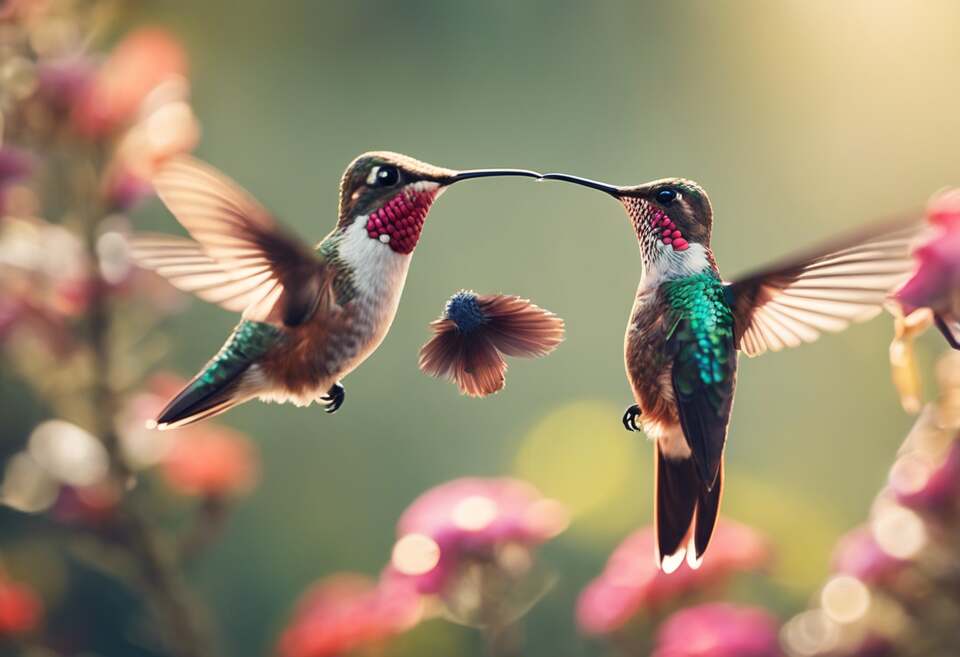
The Diverse Habitat Preferences of Hummingbird Species
Hummingbirds are fascinating creatures known for their agility, vibrant colors, and unique habitat preferences. These tiny birds can be found in a variety of environments, from tropical rainforests to deserts, showcasing their adaptability to different ecosystems. Understanding the diverse habitat preferences of hummingbird species is crucial for their conservation and protection.
Tropical Rainforests
Hummingbirds thrive in tropical rainforests, where they can find an abundance of nectar-rich flowers to feed on. The dense vegetation and continuous blooming plants provide a perfect environment for these nectar-loving birds. Species like the Long-billed Hermit and the Violet-crowned Woodnymph are commonly found darting between flowers in the lush canopy of tropical rainforests.
Desert Ecosystems
Contrary to popular belief, some hummingbird species also inhabit desert regions. These birds have adapted to arid environments by seeking out flowering cacti and other desert plants for nectar. The Costa’s Hummingbird and the Lucifer Hummingbird are examples of species that have made the desert their home, demonstrating their remarkable endurance in harsh conditions.
Mountainous Regions
Hummingbirds can also be found in high-altitude mountainous regions, where they have evolved to survive in cooler temperatures. Mountain habitats offer a diverse range of flowering plants that attract hummingbirds in search of food. The Broad-tailed Hummingbird and the Calliope Hummingbird are known to frequent mountain meadows and forests, showcasing their preference for these elevated environments.
Coastal Areas
Coastal areas provide another habitat for hummingbird species to thrive. These birds can be spotted along coastlines, feeding on seaside flowers and exploring coastal forests. The Anna’s Hummingbird and the White-necked Jacobin are examples of species that frequent coastal habitats, taking advantage of the diverse nectar sources available in these regions.
Urban Gardens
In addition to natural habitats, some hummingbird species have adapted to urban environments, finding food sources in gardens and parks. Planting nectar-rich flowers like salvia, fuchsia, and bee balm can attract hummingbirds to urban areas, providing them with essential sustenance. The Rufous Hummingbird and the Black-chinned Hummingbird are known to visit backyard feeders and gardens in urban settings.
Understanding the diverse habitat preferences of hummingbird species is essential for creating conservation strategies that protect these remarkable birds. By preserving their natural habitats and providing nectar-rich food sources, we can ensure that hummingbirds continue to enchant us with their beauty and grace for generations to come.
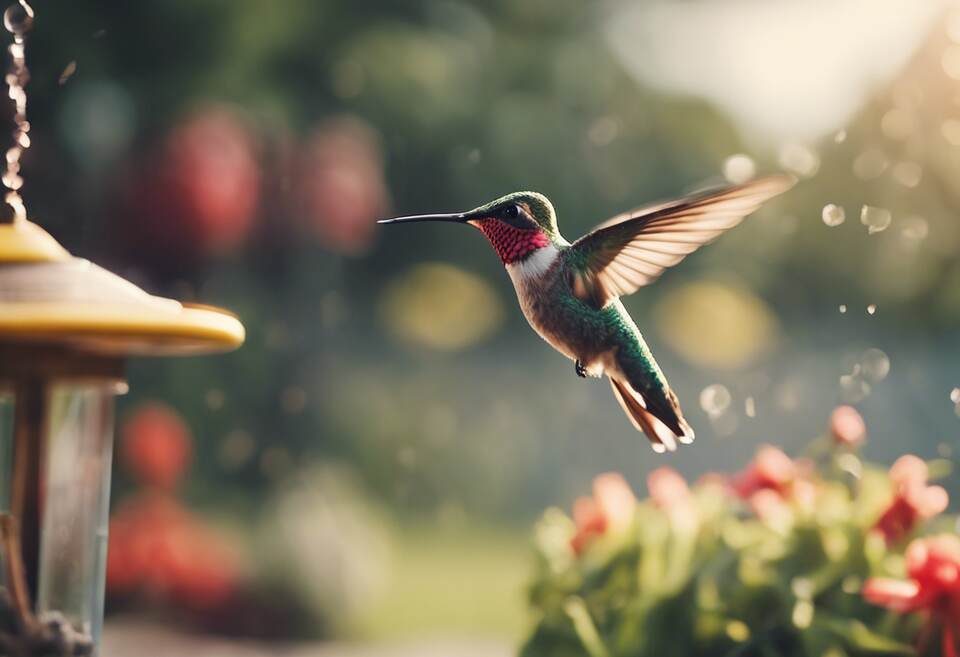
Intriguing Behaviors of Hummingbirds
Hummingbirds are fascinating creatures that capture the imagination with their vibrant colors, spectacular aerial acrobatics, and unique behaviors. Let’s delve into some intriguing behaviors of these tiny yet remarkable birds.
Discovering Hummingbirds’ Favorite Feeding Spots
Hummingbirds have a keen sense of finding the best food sources. They are attracted to bright, tubular flowers with high nectar content. Red is a color that particularly catches their attention, making flowers like trumpet vine, bee balm, and hibiscus popular choices for these avian pollinators.
Unveiling the Mystery Behind Hovering
One of the most mesmerizing behaviors of hummingbirds is their ability to hover effortlessly in mid-air. This unique skill is attributed to their rapid wingbeats, which allow them to maintain a stable position while sipping nectar from flowers or feeders. With an average wingbeat rate of 50 to 80 times per second, hummingbirds showcase unmatched agility in the avian world.
Delving into Aggressive Behavior
Despite their tiny size, hummingbirds can be fiercely territorial. They vigorously defend their feeding and nesting territories from intruders, including other hummingbirds and larger bird species. Chirping vocalizations, aerial chases, and dive-bombing maneuvers are common tactics used by hummingbirds to protect their claimed areas.
Unraveling the Mystery of Nesting Habits
Hummingbirds are meticulous nest builders, weaving together plant fibers, spider silk, and other fine materials to create small, cup-shaped nests. These nests are often camouflaged with lichens and moss to blend in with the surrounding vegetation, providing a secure haven for their eggs and nestlings.
Embracing the Fascinating World of Hummingbirds
Hummingbirds captivate us with their enchanting behaviors, from their aerial prowess to their vibrant displays of color. By unraveling the mysteries of these tiny marvels of the avian world, we gain a deeper appreciation for the beauty and wonder they bring to our lives. Take a moment to observe these intriguing creatures in action, and you’ll be treated to a mesmerizing glimpse into the captivating world of hummingbirds.
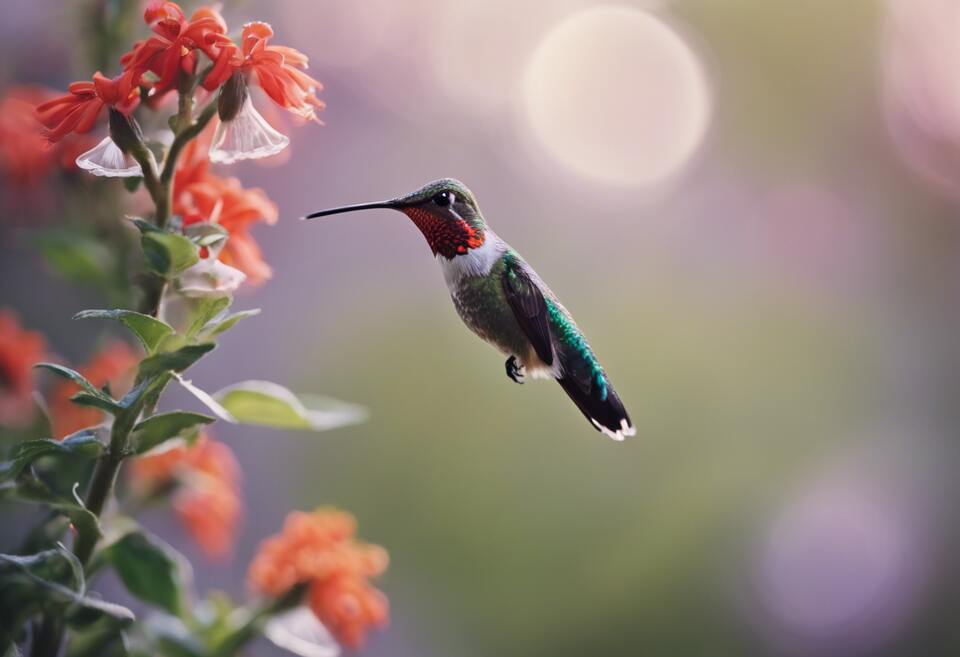
The Vital Role of Hummingbirds in Pollination
Hummingbirds play a crucial role in pollination ecosystems due to their unique physical and behavioral characteristics. These tiny birds are not only fascinating to watch but also essential for the survival of many plant species. Let’s delve into the vital role hummingbirds play in pollination ecosystems.
The Anatomy of a Hummingbird
Hummingbirds are known for their small size, vibrant plumage, and remarkable flying abilities. Their long, slender bills are perfectly adapted for reaching nectar deep within flowers. This specialized bill allows them to extract nectar with precision, making them efficient pollinators.
Feeding Behavior
Hummingbirds primarily feed on the nectar of flowers, consuming up to twice their body weight in a single day. As they move from flower to flower in search of nectar, they unintentionally transfer pollen from one plant to another, facilitating cross-pollination.
Specialization in Tube-Shaped Flowers
Hummingbirds have co-evolved with certain plant species that have tubular-shaped flowers. These flowers are specially adapted to be pollinated by hummingbirds due to their long, narrow shape, which allows the birds’ bills to access the nectar while brushing against the reproductive parts of the flower.
Long-Distance Pollinators
Due to their ability to cover great distances in search of food, hummingbirds act as long-distance pollinators for many plant species. They help maintain genetic diversity within plant populations by transferring pollen between distant individuals, ensuring the survival of the species.
Role in Plant Reproduction
Pollination is essential for plant reproduction, as it is the process by which plants exchange genetic material. Through their pollination efforts, hummingbirds contribute to the production of fruits and seeds, which are crucial for the proliferation of plant species.
Importance of Biodiversity
Hummingbirds play a significant role in maintaining biodiversity within ecosystems. By pollinating a wide variety of plant species, they support the health and stability of plant communities. This, in turn, benefits other wildlife that rely on these plants for food and shelter.
Threats to Hummingbirds
Despite their importance in pollination ecosystems, hummingbirds face various threats, including habitat loss, climate change, and pesticide use. Conservation efforts are crucial to ensure the continued survival of these remarkable birds and the plant species they pollinate.
Conservation Efforts
Several organizations and researchers are working to protect hummingbirds and their habitats. By raising awareness about the importance of these birds in pollination ecosystems, they aim to instigate conservation actions that will safeguard hummingbird populations for future generations.
Hummingbirds play a vital role in pollination ecosystems by facilitating cross-pollination, plant reproduction, and biodiversity. Their unique abilities and behaviors make them indispensable members of many ecosystems, underscoring the importance of conserving these remarkable creatures.
Conclusion
As we explore the dazzling world of hummingbirds, it becomes evident that these tiny creatures are a remarkable testament to the wonders of evolution. Their journey through time, shaped by various environmental factors, has led to the development of unique physical characteristics that set them apart from all other bird species. From their vibrant plumage to their incredible wing speed, hummingbirds are truly extraordinary beings that continue to captivate our hearts.
Furthermore, the diverse habitat preferences of hummingbird species showcase their adaptability and resilience. From the lush rainforests of South America to the arid deserts of North America, hummingbirds have found ways to thrive in a wide range of environments. This adaptability not only reflects their resourcefulness but also highlights the importance of preserving diverse habitats to ensure the survival of these incredible creatures.
Additionally, the intriguing behaviors of hummingbirds offer a glimpse into the complex social dynamics and mating rituals that govern their lives. From elaborate courtship displays to fierce territorial battles, hummingbirds never cease to amaze us with their fascinating behaviors. These behaviors not only serve crucial evolutionary purposes but also add depth to our understanding of these enchanting birds.
Moreover, the vital role of hummingbirds in pollination ecosystems cannot be overstated. As they flit from flower to flower in search of nectar, hummingbirds inadvertently facilitate the pollination of various plant species, thus playing a critical role in maintaining the balance of delicate ecosystems. Without the tireless efforts of hummingbirds, many plant species would struggle to reproduce and survive, underscoring the interconnectedness of all living things on our planet.
The evolution, physical characteristics, habitat preferences, behaviors, and ecological significance of hummingbirds collectively paint a vivid portrait of these enchanting creatures. By exploring the intricacies of their existence, we gain a deeper appreciation for the beauty and complexity of the natural world. As we continue to study and protect hummingbirds and their habitats, we contribute to the preservation of not only a species but also a living symbol of resilience, adaptability, and harmony in the wondrous tapestry of life.
Next time you catch a glimpse of a hummingbird hovering near a colorful flower, take a moment to marvel at the extraordinary journey that has led to the creation of these tiny yet magnificent marvels of nature.

